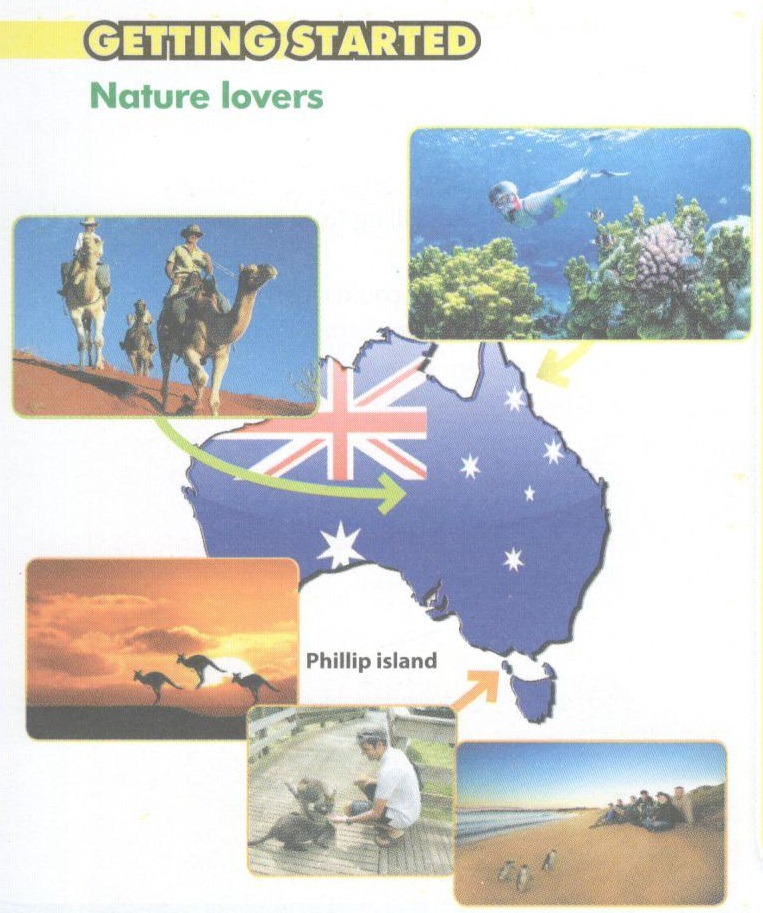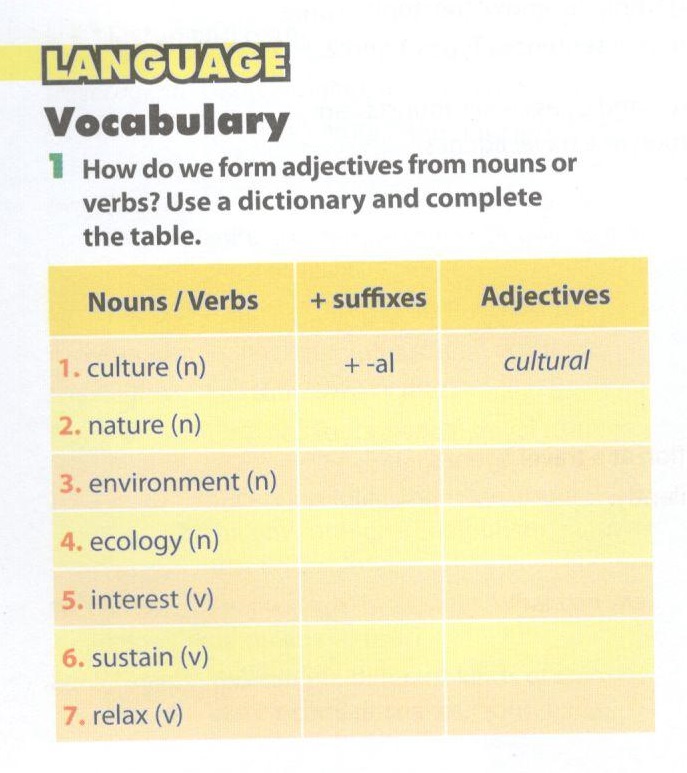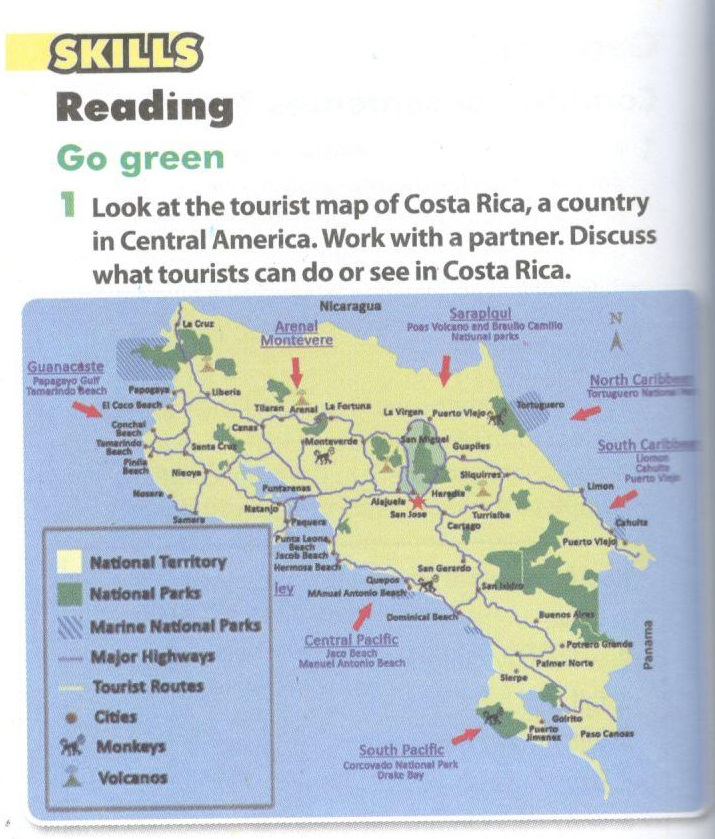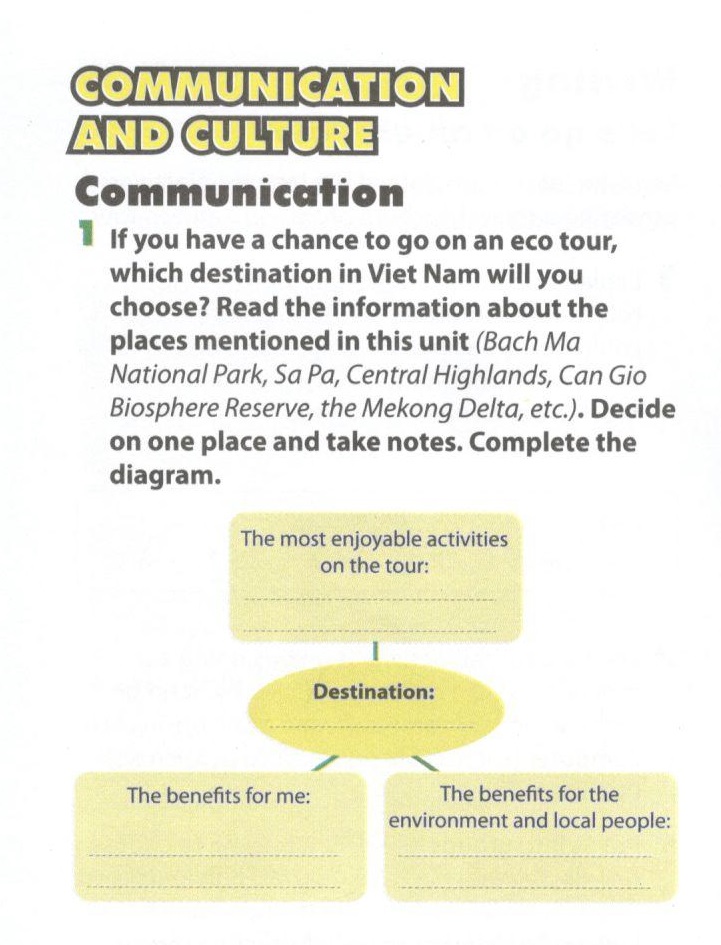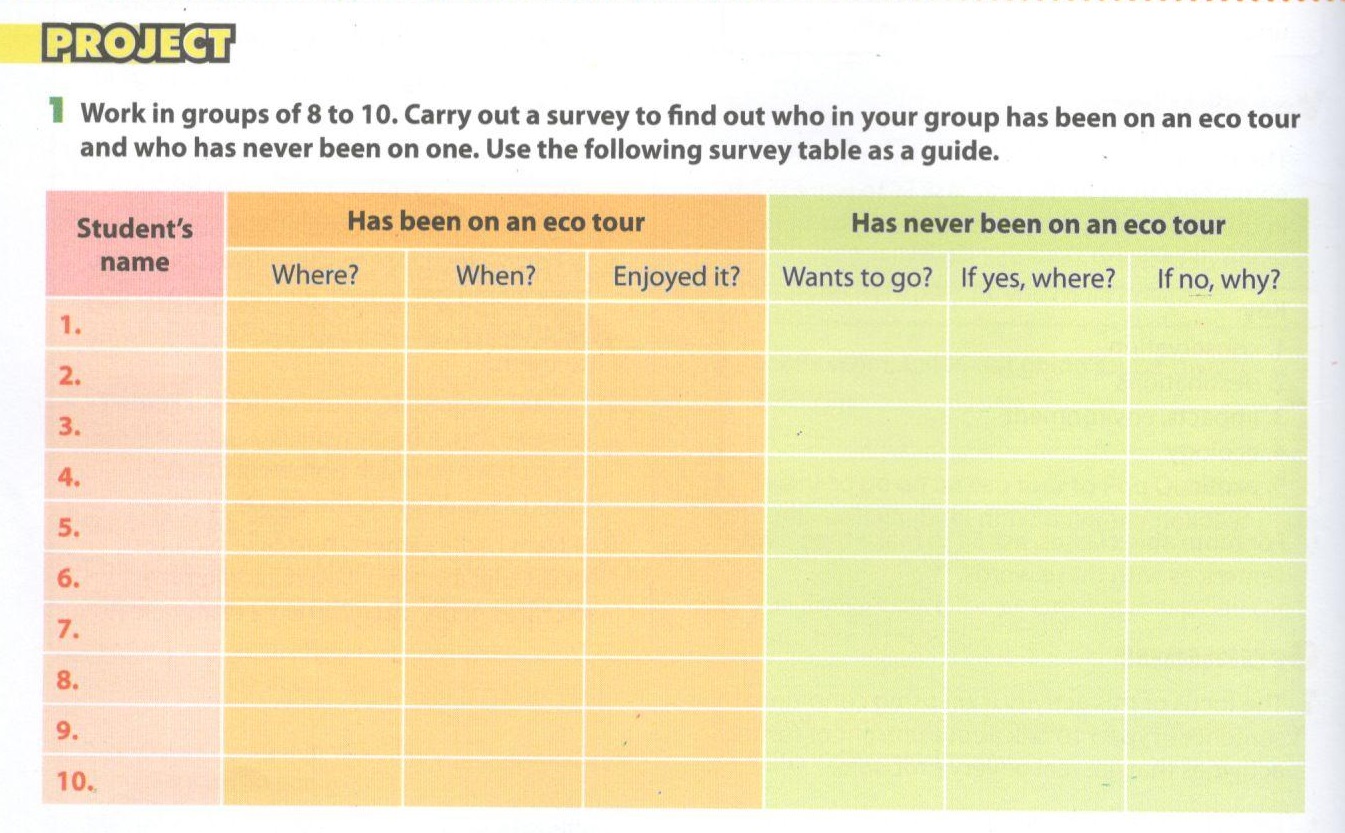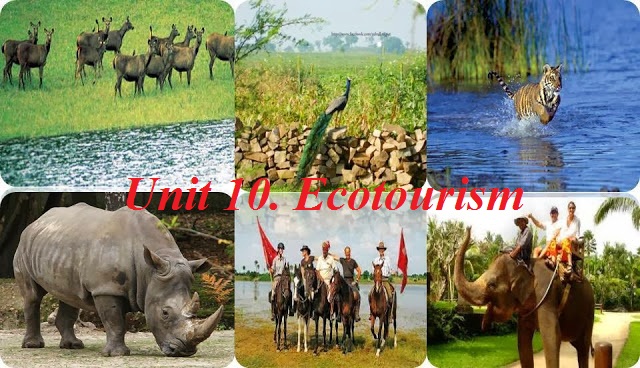
Skills - trang 41 Unit 9 SGK Tiếng Anh 10 mới
Tổng hợp các bài tập phần Skills - trang 41 Unit 9 SGK Tiếng Anh 10 mới.
- Bài học cùng chủ đề:
- Communication and Culture - trang 45 Unit 9 SGK Tiếng Anh 10 mới
- Looking Back - trang 46 Unit 9 SGK Tiếng Anh 10 mới
- Project - trang 47 Unit 9 SGK Tiếng Anh 10 mới
- Ngữ pháp tiếng anh hay nhất
Reading (Đọc)

1. What do you think the environmental impact in each photo is? Read the text quickly and check your answers.
Em nghĩ tác động gì ảnh hưởng đến môi trường trong mỗi bức hình? Đọc nhanh bài đọc và kiểm tra câu hỏi.
KEY
1. noise pollution (ô nhiễm tiếng ồn)
2. water pollution (ô nhiễm nước)
3. air pollution (ô nhiễm không khí)
4. soil pollution (ô nhiễm đất)
2. Quickly read the text and select the best title.
Đọc nhanh bài văn và chọn đề tựa hay nhất.
a. Natural Resource Depletion
b. The Long-term Damage of Soil
c. Environmental Pollution
d. The Destruction of Ecosystem
Environmental pollution is one of the impacts of human activities on the Earth. It is also one of the biggest problems of the world today because it brings about contamination, ecosystem, and the cause of some diseases that most people do not know about. There are four types of pollution, namely, air pollution, soil pollution, water pollution and noise pollution.
Most of the air pollution results from the burning of fossil fuels, motor vehicles, factories, aircraft and rockets. This can cause acid rain which damages water, soil, and vegetation. Air pollution also contributes to the greenhouse effect which can lead to a series of environmental problems such as global warming, polar ice melting, rise of sea levels and loss of land.
Soil pollution is a result of dumping plastic or other inorganic waste in the ground and the overuse of chemical fertilizers in agriculture. The long-term effects of soil pollution are contaminated vegetation and the decrease of soil fertility.
Water pollution is a result of dumping pollutants such as detergents, pesticides, oil, and other chemicals in rivers, which makes the water unclean or contaminated. Rubbish blockages in rivers can also cause pollution.
The effects of water pollution include the destruction of ecosystem of rivers, lakes and the pollution of groundwater, surface water and seawater.
Noise pollution is caused by loud and annoying sounds of motor vehicles, railway, aircraft and jet engines, factory machinery and musical instruments. It can cause stress and psychological and health problems for humans such as increased heart rate and hearing damage.
Environmental pollution is becoming an increasingly serious problem or threat that needs to be taken care of as soon as possible, not only for the sake of the envionment, but also for the people that live in it.
KEY
c. Environmental Pollution (Ô nhiễm môi trường)
Dịch:
Ô nhiễm môi trường là một trong những tác động của hoạt động con người vào trái đấ: Nó cũng là một trong những vấn đề lớn nhất của thế giới ngày nay. Ô nhiễm môi trườnr là nguyên nhân của vài bệnh mà hầu hết con người không hề biết. Có 4 loại ô nhiễm ô nhiễm không khí, ô nhiễm đất, ô nhiễm nước, ô nhiễm tiếng ồn.
Hầu hết ô nhiễm không khí là do việc đốt nhien liệu hóa thạch, từ phương tiện xe cộ, nhồ máy, máy bay và tên lửa. Điều này có thể gây ra mưa axít mà gây hại cho nước, đất và câv cỏ. 0 nhiễm không khí cũng gây hiệu ứng nhà kính mà dẫn đến việc Trái đất nóng dần lên, tan băng ở cực, mực nước biển dâng cao và thiếu đất.
Ô nhiễm đất là kết quả của việc vứt các chất nhựa hoặc rác vô cơ khác xuống đất và sử dụng quá nhiều phân bón hóa học trong nông nghiệp. Những ảnh hưởng lâu dài của ô nhiễm đất là cây cỏ bị ô nhiễm và giảm độ màu mỡ của đất.
Ô nhiễm nguồn nước là kết quả của việc vứt các chất gây ô nhiễm như chất tẩy rửa, thuốc trừ sâu, dầu và chất hóa học khác xuống sông, mà làm cho nguồn nước bị bẩn hoặc bị ô nhiễm. Việc tắc nghẽn rác trên sông cũng có thể gây ra ô nhiễm. Những ảnh hưởng của ô nhiễm nước bao gồm việc phá hủy hệ thống sinh thái sông, hồ và ô nhiễm nước ngầm, mặt nước và nước biển.
Ô nhiễm tiếng ồn do âm thanh khó chịu và lớn của XG cộ, đường xe lửa, máy bay và động cơ phản lực, máy móc, nhà máy và nhạc cụ. Nó có thể gây căng thẳng và những vấn đề tâm lý và sức khỏe cho con người như tăng tỉ lệ bệnh tim và gây hại cho khả năng nghe.
Ô nhiễm môi trường đang trở thành một vấn đề ngày càng nghiêm trọng hoặc là mối đe dọa mà cần được quan tâm càng sớm càng tốt không chỉ cho mục đích môi trường, mà còn cho những người đang sống trong đó.
3. Match each highlighted word in the text with its definition below.
Nối từ được đánh dấu trong bài với định nghĩa đúng bên dưới.
1. ______________ : a complex set of relationships among the living resources, habitats, and residents of an area. It includes plants, trees, animals, fish, birds, etc.
2. ______________ : chemicals used to kill insects
3. ______________ : not related to animals, plants or trees
4. ______________ : plants in general
5. ______________ : manures or substances that support plant growth
6. ______________ : things that make the air, water and soil unclean or contaminated
KEY
1. ecosystem: một phức hợp những mối quan hệ phức tạp giữa những nguồn sống, môi trường sống và nơi ở của một khu vực. Nó bao gồm những cây, động vật, cá, chim...
2. pesticides: chất hóa học được cùng dể giết côn trùng
3. inorganic: không liên quan đến động vật, cây cối
4. vegetation: cây cối nói chung
5. fertilizer: phân bón hoặc chất mà hỗ trợ cây phát triển
6. pollutants: những thứ mà làm cho không khí, nước và đất bị bẩn và ô nhiễm
4. Are the sentences true (T) or false (F)? Correct the false sentences.
Những câu này đúng (T) hay sai (F)? Sửa câu sai.

KEY
1. F 2. F 3. T
4. T 5. T 6. T
Dịch:
1. Ô nhiễm môi trường là do thiên tai. (F)
—> Environmental pollution is one of impacts of human activities.
Ô nhiễm môi trường là một trong những tác dộng của hoạt động con người.
2. Hiệu ứng nhà kính là kết quả của ô nhiễm nước. (F)
—> The greenhouse effect is a result of air pollution.
Hiệu ứng nhà kính là kết quả của ô nhiễm không khí.
3. Sử dụng nhiều phân bón có thể làm giảm độ màu mỡ của đất. (T)
4. Chất gây ô nhiễm nước là những thứ như chất tẩy rửa, thuốc trừ sâu, dầu, những hóa chát khác và nghẽn rác ở sông mà làm cho nước bị ô nhiễm. (T)
5. Ô nhiễm tiếng ồn có thể làm tăng bệnh tim và gây hại đến khả năng nghe. (T)
6. Ô nhiễm môi trường cần được quan tâm cho mục đích môi trường và người sông trong nó. (T)
5. Work in groups. Discuss the types of pollution in your neighbourhood and their consequences.
Làm theo nhóm. Thảo ỉuận những loại ô nhiễm trong xóm era và kết quả của chúng.
There is soil pollution in my neighbourhood. People throw much garbage on the ground. This makes the soil contaminated. This also creates/causes the decrease of soil fertility.
Xóm tôi bị ô nhiễm đất. Người ta ném rất nhiều rác trên mặt đất. Điều này làm cho đất bị ô nhiễm. Điều này củng làm giảm đi độ màu mỡ của đất.
Speaking (Nói)
Environmental impacts of human activities
Tác động môi trường của hoạt động con người
1. Label the photos with the types of pollution.
Ghi tên những bức ảnh với loại ô nhiễm.

KEY
1. soil pollution (ô nhiễm đất)
2. water pollution (ô nhiễm nước)
3. air pollution (ô nhiễm không khí)
4. noise pollution (ô nhiễm tiếng ồn)
2. Read the text in the READING section again. Complete the table below. Include your ideas, if necessary.
Đọc bài vần trong phần đọc lại lần nữa. Hoàn thành bảng bên dưới. Bao gồm cả ý của em nếu cần.
|
Human activity |
Type of pollution |
Consequence |
|
fossil fuel burning by motor vehicles, factories, aircrafts and rockets |
air pollution |
a series of environmental problems such as acid rain, greenhouse effect, global warming and health problems |
|
fertilizers and pesticide sprays, harmful rubbish and chemicals thrown in the rivers |
|
|
|
loud and annoying sounds from factory machinery, motor vehicles, aircraft, and musical instruments |
noise pollution |
|

KEY
|
Human activity |
Type of pollution |
Consequence |
|
fossil fuel burning by motor vehicles, factories, aircrafts and rockets |
air pollution |
a series of environmental problems such as acid rain, greenhouse effect, global warming and health problems |
|
fertilizers and pesticide sprays, harmful rubbish and chemicals thrown in the rivers |
soil pollution |
Contaminated vegetation and the decrease of soil fertility leading to the negative utilization of land. |
|
loud and annoying sounds from factory machinery, motor vehicles, aircraft, and musical instruments |
noise pollution |
Human psychological anc health problems such as stress, the increase of hear rate and hearing damage |
3. Work in pairs. Practise the following conversation.
Làm theo cặp. Thực hành bài đàm thoại sau.
Student A: We are facing severe environmental pollution despite the fact that many world organisations are working hard to reduce it.
Student B: Well, it is a result of human activities in modern times. For example, air pollution is a consequence of fossil fuel burning by motor vehicles, factories, aircraft and rockets.
Student A: You're right. It leads to a series of environmental problems such as acid rain, greenhouse effect, global warming and health problems.
Student B: Well, if this goes on, the Earth may soon become a dangerous place to live on. Therefore, we must do something before it is too late.
KEY
Học sinh A: Chúng ta đang đối mặt với ô nhiễm môi trường nghiêm trọng mặc dù rằng nhiều tổ chức đang làm việc vất vả để giảm thiểu nó.
Học sinh B: À, nó là kết quả của những hoạt động con người trong thời hiện đại. Ví dụ ô nhiễm không khí là kết quả của việc đốt nhiên liệu hóa thạch của các phương tiện xe cộ, nhà máy, máy bay và tôn lửa.
Học sinh A: Bạn nói đúng. Nó dẫn đến hàng loạt những vấn đề môi trường như mưa axít, hiệu ứng nhà kính, trái đất ấm lên và những vấn đề sức khỏe.
Học sinh B: À, nếu điều này tiếp tục, trái đất có lẽ sớm trở thành một nơi nguy hiểm để sống. Vì vậy, chúng ta phải làm gì đó trước khi quá muộn.
4. Work in groups. Choose one of the types of pollution in 2. Use the information from the table to prepare a similar conversation as in 3.
Làm theo nhóm. Chọn một loại ô nhiễm trong mục 2. Sử dụng thông tin từ bảng để chuẩn bị cho bài đàm thoại.
KEY
Student A: Our earth is having the severe soil pollution. The soil is very harmful now.
Học sinh A: Trái đất chúng ta dang có sự ô nhiễm đất nghiêm trọng. Đất bây giờ rất độc hại.
Student B: Yes, It is the result of human activities. People use fertilizer and spray pesticides, threw harmful rubbish and chemicals in the river.
Học sinh B: Đúng vậy, nó là kết quả của hoạt động con người. Người ta sử dụng phân bón và phun thuốc trừ sâu, ném rác và hóa chất gây hại xuống sông.
Student A: These cause the vegetation contaminated and the the decrease of soil fertility. This leads the negative unilization of land.
Học sinh A: Những điều này làm cho thực vật bị nhiễm độc và việc giảm độ màu mỡ của đất. Điều này dẫn đến tận dụng đất một cách tiêu cực.
5. Act out the conversation you have prepared.
Thực hành bài đàm thoại mà em đã chuẩn bị.
Listening (Nghe)
Preserving the natural environment
Bảo tồn môi trường tự nhiên
1. Look at the photo and describe what you see.
Nhìn vào hình và miêu tả những gì em thấy.

KEY
People are planting a tree.
Người ta đang trồng cây.
2. Listen to a student's talk. What is he talking about? Tick the correct box.
Nghe bài nói của học sinh. Cậu ấy đang nói về điều gì? Chọn câu đúng.
Click tại đây để nghe:

KEY
Environmental Degradation (Phá hủy môi trường)
AUDIO SCRIPT
The environment is the natural world in which people, animals and plants live. The natural environment has been seriously affected and degraded by human activities through many decades. For instance, the burning of fossil fuels by factories and motor vehicles has led to air pollution and resulted in acid rains, greenhouse effect and health problems.
We should do something immediately to protect our environment. For instance, we should control the burning of fossil fuels and encourage forestation to replace deforestation. In addition, there should be appropriate places to dump harmful rubbish and chemicals to reduce the rate of water pollution, a threat to human health and a danger to aquatic animals.
To minimize the rate of environmental degradation and to raise awareness of its threats, the preservation of the environment should be included in education and mass media. People should make every effort to preserve the environment for the next generation.
3. Listen again. Tick the words you hear. Look up the meanings of unfamiliar words in a dictionary.
Nghe lại. Chọn từ mà em nghe. Tra nghĩa của những từ này trong từ điển.
Click tại đây để nghe:

KEY
1. degrade: lower in quality (giảm chất lượng)
2. resulted: caused an outcome (gây ra một kết quả)
3. erosion: condition in which earth’s surface is worn away by the action of water and wind (tình trạng trong đó bề mặt trái đất bị hư hỏng do tác động của nước và gió, xói mòn)
4. sewage: waste matter from home, carried away in a system of pipes (vấn đề rác từ hộ gia đình, được mang đi trong một hộ thống ống/chất thải)
5. aquatic: of water or living in water (nước hoặc sống trong nước)
6. awareness: knowledge of something (kiến thức về cái gì, sự nhận thức)
4. Listen again. Complete the sentences with one or two words from the talk.
Nghe lại. Hoàn thành các câu với một hay hai từ trong bài nói.
Click tại đây để nghe:
1. The natural environment has been seriously _______ and degraded by human activities through many decades.
2. The burning of fossil fuels by factories and motor vehicles has led to air pollution and resulted in acid rain, greenhouse effect and _______.
3. Deforestation for land use has affected the _______ and led to the extinction of rare animals, extreme floods and land erosion.
4. They have changed and degraded the natural environment and led to various _______.
5. We should ________ the burning of fossil fuels, and encourage forestation to replace deforestation.
6. People should make _______to protect the environment for the next generation.
KEY
1. affected 2. global warming 3. ecosystem
4. health problems 5. control 6. friendly materials
Dịch:
1. Môi trường tự nhiên đã bị ảnh hưởng nghiôm trọng và bị phá hủy bởi những hoạt động của con người từ nhiều thập kỷ.
2. Đột nhiên liệu hóa thạch bởi nhà máy và xe cộ đã dẫn đến ô nhiễm không khí và dẫn đến kết quả mưa axít, hiệu ứng nhà kính và trái đất ấm dần lên.
3. Phá rừng để lấy đất sử dụng đã ảnh hưởng đến hệ sinh thái và dẫn đến sự tuyệt chủng động vật quý hiếm, thức ăn và xói mòn đất.
4. Họ đã thay đổi và phá hủy môi trường tự nhiên và dẫn đến những vấn đề sức khỏe khác.
5. Chúng ta nên kiểm soát việc đốt nhiên liệu hóa thạch và khuyên khích việc trồng rừng để thay thế phá rừng.
6. Người ta nên làm ra những vật liệu thân thiện để bảo vệ môi trường cho thế hệ sau.
5. Ask and answer the following questions.
Hỏi và trả lời những câu hỏi sau.
1. What is the definition of environment in the talk?
2. What has led to air pollution?
3. What has led to soil pollution?
4. What has deforestation caused?
5. What should we do to reduce water pollution?
6. What should we do to preserve the forests?
7. What should people do to preserve the environment for the next generation?
KEY
1. Định nghĩa của môi trường trong bài nói là gì?
The natural world in which people, animals and plants live.
Thế giới tự nhiên mà con người, động vật và cây cối sống trong dó.
2. Điều gi dẫn đến ô nhiễm không khí?
The burning of fossil fuel by factories and motor vehicles.
Đốt nhiên liệu hóa thạch từ nhà máy và phương tiện xe cộ.
3. Điều gì dẫn đến ô nhiễm đất?
The use of harmful chemicals in agriculture.
Việc sử dụng chất hóa học có hại trong nông nghiệp.
4. Phá rừng gây ra điều gì?
The Extreme/serious flood and soil erosion, the extinction of rare animals.
Sự tuyệt chủng của động vật quý hiếm, lủ lụt nhiều và xói mòn đất.
5. Chúng ta nên làm gì để giảm ô nhiễm nước?
We should dump harmful rubbish and chemicals at appropriate places.
Chúng ta nên bỏ rác và chất hóa học có hại ở những nơi phù hợp.
5. Chúng ta nên làm gì để bảo tồn rừng?
We should replace deforestation with forestation.
Chúng ta nên thay thế việc phá rừng bằng việc trồng rừng.
6. Con người nên làm gì để bảo tồn môi trường cho thế hệ sau?
We should make every effort to preserve the environment for the next generation.
Chúng ta nên nỗ lực dể bảo tồn môi trường cho thế hệ sau.
Writing (Viết)
Pratical advice on water and electricity consumption
Lời khuyên thực tiễn về tiệu thụ nước và điện
1. What do you see in the picture? What does the text in the picture mean? Do you turn off the tap while you are brushing your teeth?
Em thấy gì trong hình? Câu trong hình có nghĩa gì? Em có tắt vòi nước trong khi đánh răng không?

- A person is turning off the tap while brushing teeth. It means you should save water and use water appropriately.
Một người đang tắt vòi nước khi đang chải răng. Nó có nghĩa là bạn nên tiết kiệm nước và sử dụng nước hợp lý.
- Yes, I do.
Vâng, tôi có.
2. The following paragraphs are extracts from a student's talk giving some practical advice on reducing water and electricity consumption at home. Quickly read the text and match the headings (a-d) with the paragraphs (1-4).
Các đoạn văn sau đây là phần phụ từ bài nói của học sinh về việc đưa ra lời khuyên thực tê đổ giảm việc tiêu thụ nước và điện ở nhà. Đọc nhanh bài văn và nôi những để mục (a - d) với các đoạn văn (1 - 4) cho phù hợp.
a. Your participation in environmental preservation
b. Your actions to reduce water consumption
c. Your actions to reduce electricity consumption
d. Introducing the environmental problem
1. Fresh, clean water is very important to life because no one can live long without it. Yet it is one of the limited and most endangered natural resources on our planet. Water keeps the Earth green, and we can transform flowing water to electricity or energy. Our modern world has consumed a lot of water and electricity. So, what do you think will happen if water runs out? The following advice can help to reduce your water and electricity consumption at home.
2. When you leave a room or your home, unpluging electronic devices like television, radio, computer is an easy way to save electricity because these devices still consume energy even though they are off.
3. When you use water, you also consume energy. Turning the tap off until you need water to rinse your hands or brush your teeth, and washing full loads of laundry instead of smaller ones can help to reduce electricity and water consumption as well.
4. The above advice is very simple and not new. However, if you follow at least one of the tips, you can be proud of taking part in the preservation of water, one of the very important and limited natural resources on the Earth.
KEY
1 - d
Giới thiệu những vấn đề môi trường
Nước mát, sạch rất quan trọng với cuộc sông bởi vì không ai có thể sông mà không có nước. Nó là một trong những tài nguyên thiên nhiên có hạn và đáng lo ngại nhất trên hành tinh chúng ta. Nước giữ trái đất xanh và chúng ta có thể chuyển dòng nước chảy thành điện hoặc năng lượng. Thế giới hiện đại của chúng ta đã tiêu thụ nhiều nước và điện. Vì vậy, bạn có nghĩ điều gì sẽ xảy ra nếu nước cạn kiệt? Lời khuyên sau có thề giúp bạn giảm việc tiêu thụ nước và điện ở nhà.
2 - c
Những hành động để giảm việc tiêu thụ điện
Khi bạn rời phòng hoặc nhà, rút phích cắm những thiết bị điện như ti vi, radio, máy tính là một cách dễ dàng đểvtiết kiệm điện bởi vì những thiết bị này vẫn tiêu thụ năng lượng mặc dù chúng đang tắt.
3 - b
Những hành động giảm việc tiêu thụ nước
Khi bạn sử dụng nước, bạn cũng tiêu thụ năng lượng. Tắt vòi nước cho đến khi bạn cần nước để rửa tay hoặc chải răng và giặt quần áo đầy thùng thay vì số lượng ít hơn cũng có thể giúp bạn giảm việc tiệu thụ điện và nước.
4 - a
Việc tham gia của bạn vào việc bảo tồn môi trường
Lời khuyên trên rất đơn giản và không mới. Tuy nhiên, nếu bạn theo ít nhất một trong nhưng bí quyết này, bạn có thể tự hào về việc tham gia vào bảo tồn nước, một trong những tài nguyôn thiên nhiên có giới hạn và rất quan trọng trên Trái đất.
3. Match the following sentences with the paragraphs (1-4) in 2.
Nối những câu sau với các đoạn văn (1 - 4) trong mục 2.
a. Turn the tap off until you need water to rinse your hands or brush your teeth, and wash full loads of laundry instead of smaller ones.
b. Water is one of the limited natural resources. It can run out.
c. You can be proud of your participation in the preservation of water.
d. Unplug the electronic devices when you leave a room or your home.
KEY
a - 3
Tắt vòi cho đến khi bạn cần nước để rửa tay hoặc chải răng và giặt quần áo đầy thùng thay vĩ số lượng ít hơn.
b - 1
Nước là một trong những tài nguyên thiên nhiên có giới hạn. Nó có thể cạn kiệt.
c — 4
Bạn có thể tự hào về việc tham gia bảo tồn môi trường.
d - 2
Rút phích cắm các thiết bị điộn khi bạn rời phòng hoặc nhà.
4. Choose one of the following limited natural resources to write three paragraphs similar to those in 2: paragraph 1 to introduce the type of pollution, paragraph 2 to give some practical advice and paragraph 3 to conclude.
Chọn một trong những tài nguyên thiên nhiên có giới hạn sau để viết 3 đoạn văn tương tự trong mục 2: đoạn 1 giới thiệu loại ô nhiễm, đoạn 2 đưa ra lời khuyên thực tế và đoạn 3 kết luận.

KEY
Fossil fuel and non-renewable resources are also very important to our life. They are coal, oil, natural gases which produce energy. Using much fossil fuel and many non-renewable fuels and many non-renewable resources makes air pollution and we will run out of them. What should we do to save them?
We should reduce the use of fossil fuel for energy. And we also research and replace fossil fuel with other renewable fuels such as water, sun, etc. we should raise awareness on the problems in the public and in education.
Dịch:
Nhiên liệu hóa thạch và các nguồn tài nguyên không làm mới được cũng là những nguồn rất quan trọng trong cuộc sống. Chúng là than đá, dầu và khí thiên nhiên mà tạo ra năng lượng. Việc sử dụng năng lượng hóa thạch và tài nguyên không làm mới được quá nhiều làm cho ô nhiễm không khí và chúng ta sẽ cạn kiệt chúng. Chúng ta nên làm gì để tiết kiệm chúng?
Chúng ta nên giảm việc sử dụng nhiên liệu hóa thạch để tạo ra năng lượng. Và chúng ta cũng tìm và thay thế năng lượng nhiên liệu hóa thạch với những nhiên liệu có thể làm mới khác như nước, mặt trời,… chúng ta nên tăng cường nhận thức về những vấn đề trong công chúng và trong giáo dục.
- Unit 1: family life
- Unit 2: your body and you
- Unit 3: music
- Review 1: units 1-2-3
- Unit 4: for a better community
- Unit 5: inventions
- Review 2: unit 4-5
- Unit 6: gender equality
- Unit 7: cultural diversity
- Unit 8: new ways to learn
- Review 3: unit 6-7-8
- Unit 9: preserving the environment
- Unit 10: ecotourism
- Review 4: unit 9-10
- Tổng hợp từ vựng lớp 10 (vocabulary) - tất cả các unit sgk tiếng anh 10 thí điểm
